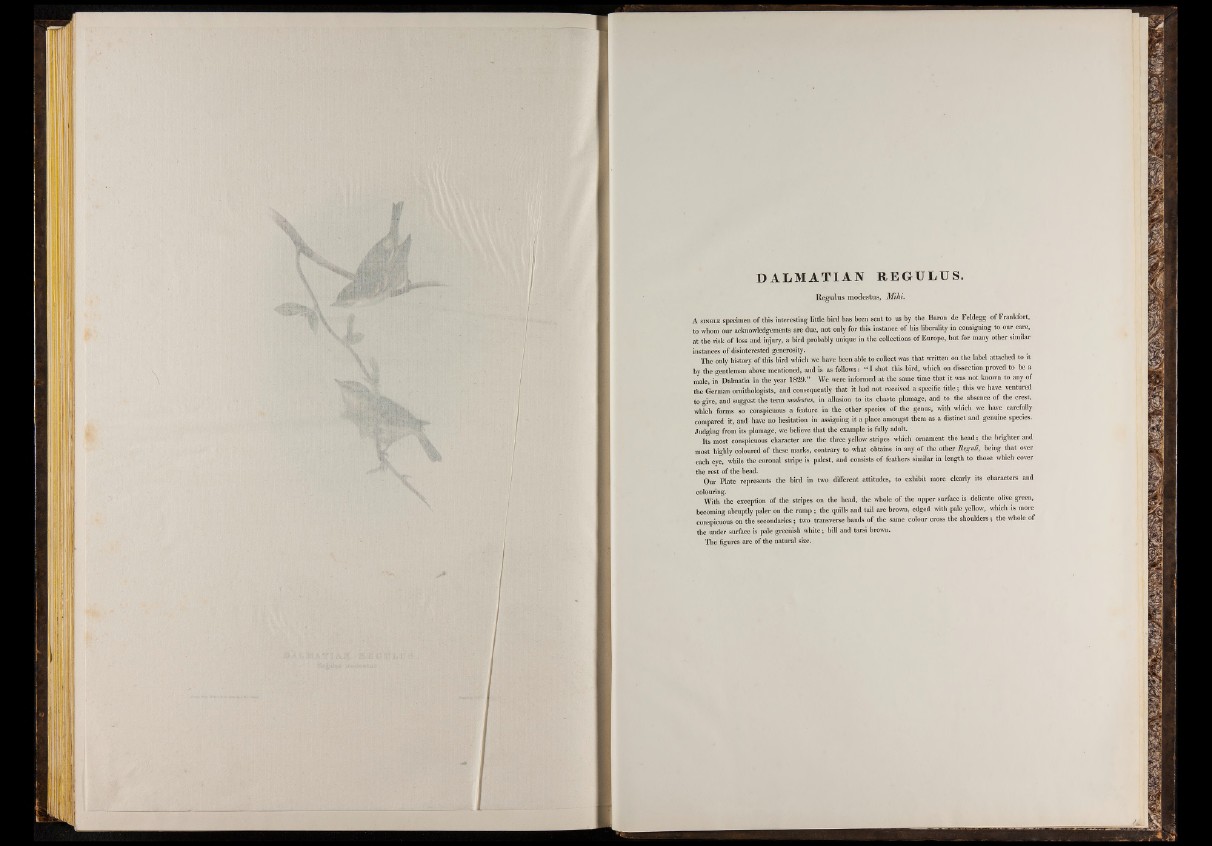
lU Ui
D A LM A T IA N R EG U LU S .
Régulas modestus, Mihi.
A s i n g l e specimen of this interesting little bird has been sent to us by the Baron de Feldegg of Frankfort,
to whom our acknowledgements are due, not only for this instance of his liberality in consigning to onr care,
at the risk of loss and injury, a bird probably unique in thé collections of Europe, but for many other similar
instances of disinterested generosity.
The only history of this bird which we have been able to collect was that written on . the label attached to it
by the gentleman above mentioned, and is as follows: “ I shot this bird, which on dissection proved to be a
male, in Dalmatia in the year 1829.” We were informed at the same time that it was not known to any of
the German ornithologists, and consequently that it had not received a specific title; this we have ventured
to give, and suggest the term moiestus, in allusion to its chaste plumage, and :tp; the absence of the crest,
which forms so . conspicuous a feature in the other species of the genus, with which we have carefully
compared it, and have no hesitation in assigning it a place amongst them as a distinct and genuine species.
Judging from its plumage, we believe that the example is fully adult
Its most conspicuous character are the three yellow stripes which ornament the head : the brighter and
most highly coloured of these marks, contrary to what obtains in any of the other Reguli, being that over
each eye, while the coronal stripe is palest, and consists of feathers similar in length to those which cover
the rest of the head.
Our Plate represents the bird in two different attitudes, to exhibit more clearly its characters and
colouring.
With the exception of the stripes on the head, the whole of the upper surface is delicate olive green,
becoming abruptly paler on the rump ; the quills and tail are brown, edged with pale yellow, which is more
conspicuous on the secondaries; two transverse bands of the same colour cross the shoulders; the whole of
the under surface is pale greenish white ; bill and tarsi brown.
The figures are of the natural size.